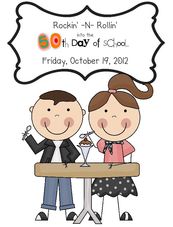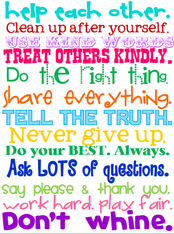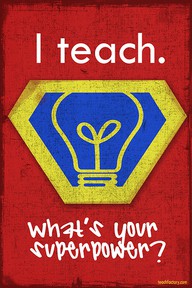This is a journal article that I have reviewed.
Journal: Montessori Life, Issue 1
Publisher: American Montessori Society
Title: Assistive Technology for Every Child
Author: Barbara Foulks Boyd
Date: 2008
According to the article, Assistive Technology for Every Child, early childhood classrooms should incorporate assistive technology into the learning environment. Assistive technology is usually defined as a piece of equipment to aid those with disabilities, but it can also be used to assist young children in their learning. With computers becoming part of everyday life, it is important for early childhood teachers to incorporate technology into the classroom. The article is geared for Montessori classrooms where each student progresses at his own rate, but the information on assisted technology can be applied to any early childhood class.
Literacy and language are the first two areas mentioned that can include technology. Young children need to learn the relationships between spoken language and print. Using a computer paint or drawing program, a student can make a picture and then dictate a story or phrase about the picture to the teacher. The teacher can then type in the words for the student. This activity helps the student make connections between spoken language and written language. Literacy can also be assisted through computer programs. With a program like Dragon Naturally Speaking, made by Nuance, the child can speak and the words appear on the computer screen.
In addition to literacy and language, the young child can also improve his math skills. Specific skills such as predicting, graphing, creating patterns, and sorting can be assisted with software like IntelliTools, Kidspiration, and Kidpix. Other subjects that can incorporate technology are history, geography, and science. Taking virtual field trips to the White House and museums can allow children to experience unique places and become interactive with them.
There is also a special keyboard that can be used to assist fine motor skills. It is called BigKeys Keyboard. It is made with one-inch keys, is brightly colored, and has easy to read labels. The vowels are color-coded in yellow. “BigKeys makes finding the keys on the keyboard easy, allowing children to focus on their work.”
Young children can be assisted in virtually every subject area with technology. From tools to help develop literacy to a keyboard for little fingers, there are many options out there for teachers to assist students using technology. Assisted technology can be used to greatly enhance the learning of all children. In the process of using assisted technology, the students are also gaining important life-long computer skills.
I am very pleased to learn how I can incorporate technology into all subject areas. I have never considered the term “assisted technology,” but after reading the article it makes sense to use technology to assist students in what I am already teaching. I am very interested in further researching some of the software mentioned that I may be able to use in my classroom. The math software and the BigKeys keyboard especially intrigue me. Even if I cannot purchase the BigKeys keyboard, it gives me the idea to color-code the vowels on the keyboards that I already have. I am also excited to take my class on a virtual field trip—it’s free! What kid wouldn’t want to see the inside the White House? Using a computer drawing program to create a picture and dictate a thought gives journal drawing a whole new prospective. I am refreshed with these new ideas to explore in my early childhood classroom.
 RSS Feed
RSS Feed


